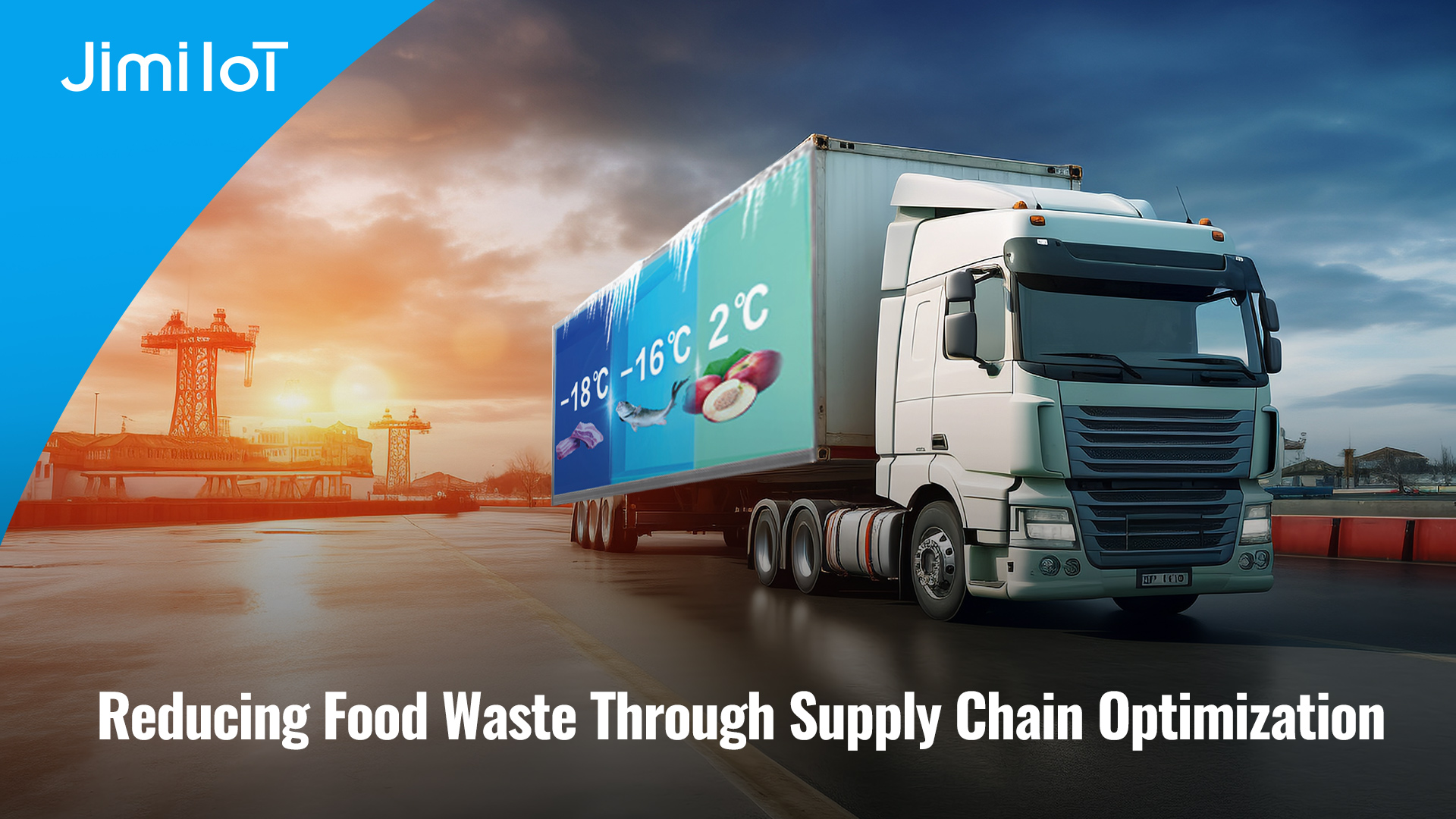Introduction
Food waste is one of the most pressing challenges in today’s supply chains, with significant environmental, economic, and ethical implications. Across the supply chain—from farms to dining tables—a substantial portion of food is lost or wasted due to inefficiencies in handling, storage, transportation, and distribution. The U.S. Department of Agriculture reports that over one-third of all available food goes uneaten annually, representing millions of tons of waste and billions of dollars in lost value.
Addressing this issue requires a concerted effort and a strategic approach to managing perishable goods more effectively. While food waste remains a complex problem, advancements in supply chain technology and improved practices offer actionable solutions to mitigate this global issue. Below, we explore five effective ways to reduce food waste by improving supply chain management.

1. Streamline Inventory Management
Inefficient inventory management is a leading cause of food waste across supply chains. Perishable goods often spoil because they are not sold or distributed in time, creating significant losses for retailers and suppliers alike.
To combat this, companies can adopt advanced inventory tracking systems that provide real-time updates on stock levels, expiration dates, and movement. By integrating predictive analytics, businesses can forecast demand with greater accuracy, reducing the risk of overstocking or understocking.
Key Benefits:
- Minimized spoilage due to improved tracking of expiration dates.
- Balanced supply-demand alignment, reducing surplus.
- Enhanced operational efficiency with automated alerts for at-risk inventory.
These practices help businesses ensure that food moves through the supply chain efficiently, maximizing its shelf life and minimizing waste.
2. Enhance Cold Chain Logistics
Perishable goods, such as fresh produce, dairy, and seafood, require strict temperature-controlled environments to preserve their quality. Any variation in temperature or humidity during transportation can lead to spoilage and significant financial loss.
The LL309 Temperature and Humidity Monitoring Tracker offers a reliable and advanced solution for cold chain logistics. Equipped with GPS, BDS, and LBS, the LL309 not only tracks the precise location of goods but also continuously monitors temperature and humidity levels in real time. If any deviation from the acceptable range occurs, the device instantly alerts fleet managers via the 4G network, enabling prompt corrective actions to avoid spoilage.
Key Benefits:
- Real-time Monitoring and Alerts: Provides instant alerts if temperature or humidity strays from optimal conditions, allowing for quick intervention.
- Increased Transparency: Offers continuous tracking of location, temperature, and humidity, ensuring full visibility of product conditions throughout the entire supply chain.
- Reduction in Spoilage: By maintaining the ideal environment for perishable goods, the LL309 reduces the risk of spoilage, ensuring the delivery of fresher, higher-quality products.
- Offline Data Storage: Even when the device is offline, it can store up to 20,000 records, which can be exported easily for analysis, providing additional insights for cold chain management.
- Versatile Application: Ideal for use in refrigerated trucks, parcels, and other sensitive cargo tracking, ensuring perishable goods are transported and stored in optimal conditions.
Efficient cold chain management is essential not only for reducing food waste but also for maintaining compliance with safety regulations and quality standards. With the LL309, businesses can ensure their products arrive in optimal condition, enhancing customer satisfaction and streamlining operations across the entire supply chain.
3. Optimize Transportation and Delivery Networks
Transportation inefficiencies, such as delays and improper handling, are major contributors to food waste. Extended transit times or mishandling during loading and unloading can diminish the shelf life of perishable goods, making them unsellable or unsafe for consumption.
The VL110C LTE Vehicle Terminal is an advanced solution designed to optimize vehicle fleet management and improve transportation efficiency. With its compact design and wide 9-90V input voltage range, the VL110C is compatible with a diverse range of vehicles, including trucks, motorcycles, passenger cars, and light commercial vehicles. Its LTE connectivity, coupled with 2G GSM fallback, ensures consistent and reliable communication, even in areas with limited LTE coverage.
This device plays a critical role in optimizing transportation by providing real-time location tracking and status updates, allowing fleet managers to monitor routes, reduce delays, and improve delivery schedules. The VL110C’s capabilities enable fleet operators to minimize unnecessary detours and ensure timely deliveries, especially for perishable goods.
Key Benefits:
- Reduced Transit Times: Real-time location tracking and route optimization help ensure that perishable goods reach their destinations faster, preserving product quality.
- Improved Reliability: With consistent 4G LTE and 2G GSM fallback, the VL110C ensures uninterrupted connectivity, enabling reliable monitoring and communication throughout the journey.
- Lower Carbon Footprint: By optimizing routes and reducing delays, the VL110C helps minimize fuel consumption, contributing to a lower carbon footprint and more sustainable logistics.
- Versatility Across Vehicle Types: The device is ideal for a wide range of vehicles, including refrigerated trucks, which are essential for transporting perishable goods in optimal conditions.
By integrating the VL110C into transportation and logistics operations, businesses can significantly improve the efficiency of their supply chains. This leads to fresher products, fewer delays, and reduced food waste, all while enhancing delivery reliability and sustainability.lost during distribution.
4. Foster Collaboration Across the Supply Chain
Food waste reduction requires collaboration among all stakeholders in the supply chain, from farmers and suppliers to retailers and consumers. A lack of communication often leads to mismatches in supply and demand, overproduction, or logistical inefficiencies.
By fostering greater transparency and data sharing, companies can better align their operations. For example, suppliers can provide real-time updates on production volumes, enabling retailers to adjust their orders accordingly. Similarly, retailers can share sales data with suppliers to help them anticipate demand more accurately.
Key Benefits:
- Reduced surplus and waste due to better demand forecasting.
- Stronger partnerships between stakeholders.
- Enhanced adaptability to changing market conditions.
Collaborative platforms and integrated supply chain systems can facilitate this level of coordination, ensuring that resources are used more efficiently and waste is minimized.
5. Implement Waste Reduction and Redistribution Strategies
Despite best efforts, some level of food waste is inevitable. However, businesses can mitigate its impact by adopting waste reduction and redistribution strategies. Unsellable but still edible products can be donated to food banks or repurposed into secondary products such as animal feed or compost.
Many companies are also turning to food waste analytics to identify patterns and inefficiencies, enabling them to adjust their processes and prevent future losses. These insights can help businesses address waste at its source, ensuring that fewer resources are lost over time.
Key Benefits:
- Reduced environmental impact through responsible waste disposal.
- Improved community engagement via donation programs.
- Cost savings from repurposing or recycling unsellable products.
Redistribution strategies not only help reduce waste but also promote corporate social responsibility, demonstrating a commitment to sustainability and community well-being.
The Path to Sustainable Food Supply Chains
Reducing food waste is both a challenge and an opportunity for businesses across the supply chain. By adopting advanced technologies, optimizing logistics, and fostering collaboration, companies can make significant strides toward a more sustainable and efficient food system.
These efforts go beyond environmental benefits; they also translate into cost savings, improved operational efficiency, and enhanced brand reputation. While eliminating food waste entirely may not be feasible, proactive measures can dramatically reduce its impact, creating a more resilient and equitable supply chain.
Through commitment and innovation, businesses can take meaningful steps to address this critical issue, ensuring that more food reaches the people who need it while minimizing losses and protecting valuable resources.
Why JimiIoT
JimiIoT is a global leader in innovative IoT solutions. We provide cutting-edge hardware and software tailored to enhance efficiency and connectivity. Our range of products includes advanced GPS tracking devices, asset management solutions, smart vehicle dashcams, and telematics platforms. With a focus on technological excellence and customer satisfaction, we empower businesses to optimize operations and gain valuable insights from data-driven analytics. Trust JimiIoT to drive positive change and unlock growth opportunities in the digital age.
If you would like more details, please visit Facebook, LinkedIn, INS, and Twitter pages for further information.
